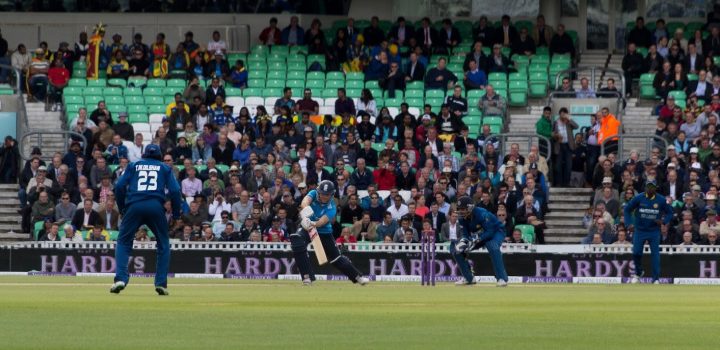 ( Getty Images)
( Getty Images)
“Unfit, fat and lazy”. Kevin Pietersen’s description of Samit Patel, the Nottinghamshire allrounder who’s twice been sacked by England for his woeful fitness levels.
In this isotonic, beep-test age of cricketers honed to physical perfection by computer-modelled dietary programmes and finely-calibrated workout routines, Patel rather stuck out – as a fat bloke who couldn’t be arsed.
Most recently, the 26 year old was left out of England’s World Cup squad after Andy Flower again lost patience with his lackadaisical approach to fitness. He had “thrown away his World Cup chance” , according to the England coach.
After such a setback, many lesser men than Patel have gone off the rails – and the scales – completely, relapsing into weekend-long doughnut benders and clearing the shelves at Greggs. But not he. After a winter in Brisbane, focusing on improving his fitness rather than cricket, Patel has returned to Trent Bridge a stone lighter, and eager to return to the England mix.
“The comments about my fitness did upset me. I would be lying if I said they didn’t,” Patel told the Daily Telegraph. “I definitely had to move on and I have, and accepted the fact that I wasn’t fit enough.
“I am somewhere near the targets I have been set, which I’m happy about. I have got 12 on the bleep test which is what the ECB require. I am going in the right direction now. I still have Test ambitions and obviously one day international ambitions but I need to pull my socks up in four-day cricket.”
As England fans, we’ve both been annoyed by – and enjoyed – Patel’s travails. In one sense, he’s been wasting his talent and frittering away the kind of gilt-edged opportunity every cricketer dreams of but few ever achieve. But in another, he reminds us of ourselves – corpulent, lazy club hacks – and it’s deeply reassuring.
If you think about it, there’s nothing logical about a cricketer taking his diet and fitness seriously. Every professional English player has grown up in the village and club game – the unhealthiest environment imaginable. It’s hard to think of a culture more alien to the notions of healthy eating and exercise.
Let’s examine the matchday routine on a typical village green.
Warm-up Half the squad arrive still hungover from their Saturday night excesses, and guzzle Coke and Ginsters pasties in a vain bid to sober up. The rest of the team go to the pub for a Sunday roast, washed down with lager.
Drinks break At least half the players light cigarettes.
Tea Cheese sandwiches. Ham sandwiches. Cakes. Quiche. Sweet milky tea. More cakes. Scones with cream and jam. Biscuits. Even more cakes.
Post-match At the earliest possible opportunity, everyone goes down the pub.
It’s in this climate that we nurture our young cricketers. And then there’s the whole issue of role-models. In athletics, kids have Usain Bolt to emulate. The svelte Tiger Woods is golfers’ hero. But let’s name some very successful cricketers: Shane Warne, Mike Gatting, David Boon, Inzamam Ul Haq. In cricket, not only can fat blokes get away with it – they’re often the best players.
So you can understand why the likes of Samit Patel have maintained a lifestyle increasingly at kilter with the twenty-first century coaching ethos. Cakes, booze and laziness are part of cricket’s DNA. And it would be a very different game without them.
Maxie Allen









Lazy?! Keeping up that sort of routine throughout a season requires considerable dedication….
Yeah. During last season I weighed in at 18 1/2 stone. Do you know the kind of effort it takes to play cricket when you’re my size, especially with an epic hangover? Running between the wickets is like running the bloody marathon.
Talking of marathons, I’m now quite peckish.
At my club those who are hungover don’t usually bother sobering up and join those in the pub for the roast.
He looks like a good all rounder, one that’s hungry for success.